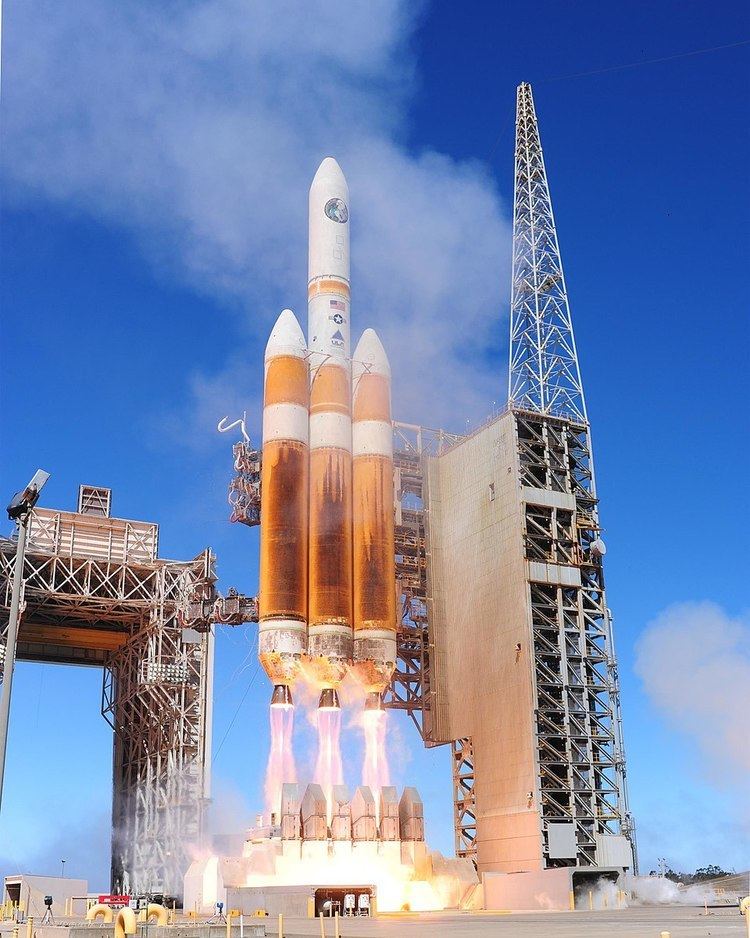Cost per launch $375 million (2016) Diameter 5 m (16 ft) | Country of origin United States Height 72 m (236 ft) | |
 | ||
Function Orbital heavy lift launch vehicle | ||
The Delta IV Heavy (Delta 9250H) is an expendable heavy lift launch vehicle, the largest type of the Delta IV family, and the world's highest capacity rocket currently in operation. It is manufactured by United Launch Alliance and it was first launched in 2004.
Contents
The Delta IV Heavy uses two additional Common Booster Cores (CBCs) as liquid rocket boosters instead of the GEM-60 solid rocket motors used by the Delta IV Medium+ versions. At lift off, all three cores operate at full thrust, and 44 seconds later the center core throttles down to 55% to conserve fuel until booster separation. The boosters burn out at 242 seconds after launch, and are separated as the core booster throttles back up to full thrust. The core burns out 86 seconds later, and the second stage completes the ascent to orbit.
History
The first launch of the Delta IV Heavy in 2004 carried a boilerplate payload, and was a partial failure. Cavitation in the liquid oxygen propellant lines caused shutdown of both boosters 8 seconds early, and the core engine 9 seconds early; this resulted in a lower staging velocity for which the second stage was unable to compensate. The payload was left in a lower than intended orbit. Its first operational payload was the DSP-23 satellite, successfully launched in 2007; it was then used to launch a further five visual and electronic reconnaissance satellites for the National Reconnaissance Office through 2013.
In December 2014, the Delta IV Heavy was used to launch an uncrewed test flight of the Orion Multi-Purpose Crew Vehicle, designated EFT-1. After several delays on December 4, the mission was successfully launched at 12:05 UTC on December 5.
Capacity of the Delta IV Heavy:
The Delta IV Heavy's total mass at launch is approximately 733,000 kg (1,616,000 lb). For comparison, the total mass at launch of the Saturn V used in the Apollo program was 2,970,000 kg (6,550,000 lb).
Upcoming launches
The following missions have been announced by NASA and the National Reconnaissance Office.
